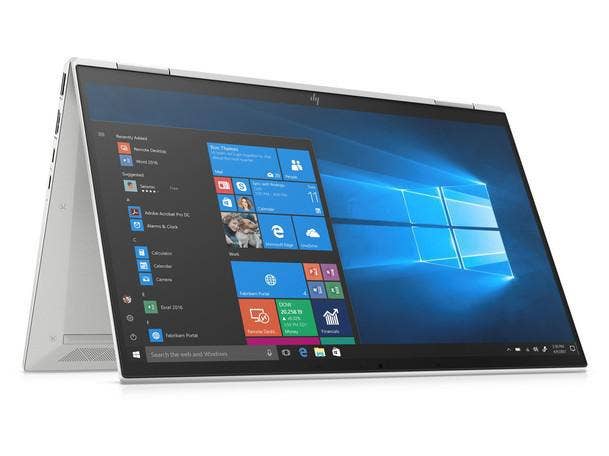HP CEO Foresees 'One PC Per Person' In the Home, Device-As-A-Service Boom
CEO Enrique Lores says 2020 has proven to be an opportunity for HP ‘accelerate the transformation’ that had already begun in key areas including personal system and 3-D printing.

HP Inc. is expecting the strong demand to continue for its PC portfolio even as more customers shift to Device-as-a-Service for procuring personal systems from the company, HP CEO Enrique Lores said in an interview with CRN.
The Palo Alto, Calif.-based company has been offering Device-as-a-Service (DaaS)--which combines PC leases with software for proactive identification of device issues--for several years. However, the health and economic crisis resulting from the COVID-19 pandemic has generated unprecedented interest in HP's DaaS offering, Lores told CRN.
"It's clearly becoming more and more important, because customers want to buy as-a-service, and want to have the flexibility that buying as-a-service provides," Lores said. "And we think this is going to stay--it's not going to be temporary. These are the opportunities that we will continue to evolve and continue to grow in the future. [Device-as-a-Service] is accelerating, as part of the overall acceleration of subscription-oriented businesses."
One solution provider seeing increased demand for DaaS is Oklahoma City-based ImageNet Consulting, a major HP partner. The shift to "as-a-service" offers a solution both for constrained budgets and for innovation, said Juan Fernandez, ImageNet's vice president of managed IT services.
"We're having those conversations with customers [about DaaS], and I'm just glad we were appropriately placed in that market to be able to offer it to them--because they're all over it right now," Fernandez said. "I've customers coming to me and in every conversation--even if it's not one about their technology--they're like, 'Tell me about this as-a-service thing--how can I leverage that for my business?'"
Along with new ways of procuring devices, HP is also seeing signs that there is an opportunity for a greater number of PCs to be in use overall as a result of the shifting dynamics, he said. PCs in the home, for instance, have become a requirement for more people as a result of remote work and learning, Lores said.
"If you want to work efficiently from home or if you want your kids to learn efficiently from home, it is very clear you need a PC. And this is a big long-term opportunity for us," Lores said. "Remember in the past when the goal was to have one PC per household? We're evolving that goal to be to have one PC per person--which, in the long term, opens up big opportunities for PCs."
In particular, notebooks have been in high demand, he said, as the favored device for many remote work and learning scenarios.
“Clearly, there's lots of demand for notebooks, driven both by working from home but also by learning from home,” Lores said. Unit sales of notebooks climbed 5 percent for HP during its second quarter of fiscal 2020, ended April 30--and that growth came even as manufacturing output was constrained. Production has since stabilized, Lores said.
“The factories have been up and running since April. So, from a manufacturing perspective, we haven't seen any disruptions during the quarter. Things are going as planned,” he said.
3-D printing technology has also been proving to be an essential tool during the COVID-19 crisis, and HP--the maker of the Multi Jet Fusion industrial 3-D printer--has been highly active in the effort.
HP and partners using its systems have produced more than 2.3 million 3-D printed parts for medical applications, the company has reported. These include parts required for face shields, face masks, ventilators and respirators.
HP has "seen a big adoption of 3-D printing to print medical products, and this has shown the value that this technology has," Lores told CRN.
Overall, "we are looking at the changes that are happening as a way to accelerate the transformation that we have already started--whether the transformation is the evolution of the business models that we were driving to as-a-service, the expansion into 3-D printing, the fact that now PCs have become essential," he said.
Additionally, "this is helping us to accelerate many of the internal transformations we were driving to be more digitally oriented," Lores said. "We are looking at the current environment as a way to accelerate our plans, which will have a positive impact for us long-term."